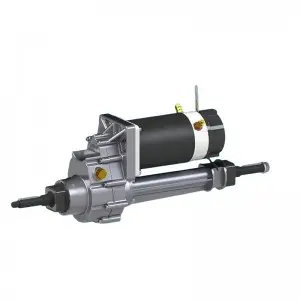Transaxle problems are a headache for any car owner. The transaxle is a critical component of a vehicle’s drivetrain, responsible for transmitting power from the engine to the wheels. When it fails, it can cause a host of problems that affect vehicle performance and safety. Knowing how to catch transaxle problems early can save you time, money, and potential safety hazards. In this article, we’ll discuss common signs of transaxle problems and how to fix them.
One of the most common signs of a transaxle problem is unusual noises coming from the transmission. If you hear a grinding, whining, or clunking sound when you shift gears or when the vehicle is moving, it may indicate a problem with the transaxle. These noises may be caused by worn gears, bearings, or other internal components. Ignoring these sounds can lead to further damage and expensive repairs.
Another red flag of a transaxle problem is difficulty shifting. If you experience resistance or friction when trying to change gears, this could be a sign of a faulty clutch or transmission component. This can make driving a vehicle a frustrating and potentially dangerous experience. It is important to address these issues promptly to prevent further damage to the transaxle and other driveline components.
A transmission oil leak is also a clear indicator of a transaxle problem. Transmission fluid is essential for lubricating and cooling transaxle components. If you notice red or brown fluid collecting under your car, this could be a sign of a transaxle leak. Low fluid levels can cause overheating and increased friction within the transaxle, leading to premature wear and potential failure. It is crucial to address any leaks and top off your transmission fluid to prevent further damage.
In addition to these symptoms, a burning smell coming from the engine bay or transmission area may also indicate a transaxle problem. This smell may be caused by overheating of the transmission fluid or worn clutch components. Ignoring this warning sign may result in serious damage to the transaxle and other driveline components. If you notice a burning smell, have your vehicle inspected by a qualified mechanic as soon as possible.
Vibrations or shudders during acceleration may also indicate a problem with the transaxle. If you feel unusual vibrations or shudders in the steering wheel or floorboards when accelerating, this could be a sign of a faulty transaxle or a worn constant velocity joint. These vibrations can affect vehicle stability and handling, posing safety risks to drivers and passengers. Addressing these symptoms promptly is critical to preventing further damage and keeping your vehicle safe on the road.
If you suspect a transaxle problem based on these signs, be sure to have your vehicle inspected by a qualified mechanic. Professional diagnostics can help pinpoint the exact cause of the problem and determine necessary repairs. Ignoring transaxle problems can lead to more extensive damage and expensive repairs. Addressing these issues early can save you time, money, and potential safety hazards.
In summary, catching transaxle problems early is critical to maintaining your vehicle’s performance and safety. Unusual noises, difficulty shifting, transmission fluid leaks, burning smells, and vibrations during acceleration are all common signs of transaxle problems. If you notice any of these symptoms, be sure to have your vehicle inspected by a qualified mechanic so the problem can be resolved promptly. Taking proactive steps to resolve transaxle problems can save you time, money, and eliminate potential safety hazards in the long run.
Post time: May-20-2024


